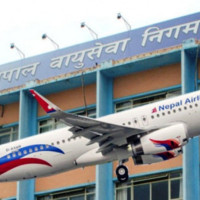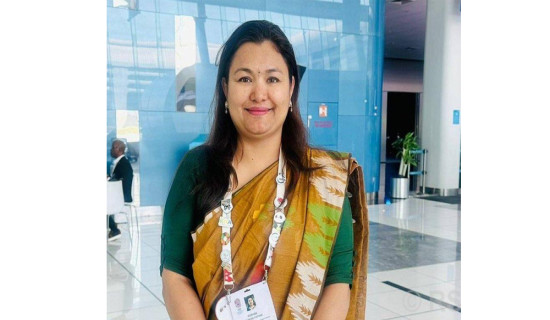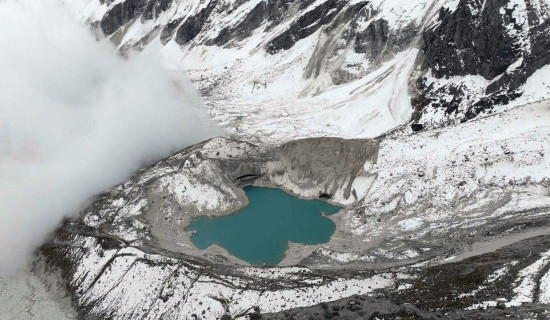- Thursday, 16 October 2025
A Comprehensive Manual On Postage Stamps
Bhubanesh Kumar Pradhan is a former secretary with an engineering background as a civil engineer and a product of one of the best engineering institutes in the world, the University of Roorkee, along with a post-graduate degree in Water Resources from the University of Strathclyde, Glasgow. Taken as one of the fearless senior bureaucrats of repute in Nepal's civil service with a deeper knowledge and strong advocacy of things and issues vital to the country, he had a bright academic background, having stood second in the overall list of school finalists in his batch.
One attribute of Pradhan is his penchant to strongly plead his case, possibly from his childhood days, as he is known to have accused the then administration of having stooped to the dictates of a senior palace bureaucrat in choosing a student for the MBBS course and bypassing him despite the former's less substantive academic credentials. Pradhan accompanied his bureaucrat father, Rameshwar Lal Pradhan, to the chamber of Foreign Secretary Narapratap Shumshere Thapa to plead that he should not be denied justice for the second time when he was chosen for Roorkee. Thapa showed sympathy but took exception to his shouting habit.
Pradhan has teamed up with another friend, Kedar Prasad Pradhan, who has degrees and expertise in diverse areas like geology, printing, and marketing, to bring out a masterly publication on postage stamps of the country. The book is entitled THE HISTORY OF NEPALESE POSTAGE STAMPS: A MATTER OF GLORY TO NEPAL, 1881–2021 (February). The voluminous book, weighing three kilos, has standard-quality printing and paper.
Both Pradhans share one common hobby, relishing collections of postage stamps as dedicated philatelists. Well-known culture expert and numismatist in his own right, Satya Mohan Joshi, revered as a literary centennial personage (May 12, 1920–October 16, 2022), has written a foreword depicting the usefulness of the publication to all categories of people, calling it a vast wealth of information on varied subjects. Incidentally, the last entry in respect of postage stamps covered by the book relates to the special stamp issued in honour of Joshi himself.
Two persons who have written Notes of Appreciation for the magnum opus include Director-General of the Postal Services Department Aabha Shrestha Karna and Shankar Shrestha, President of the Nepal Philatelic Society.
Before making a review of the book, it may be better to say something about Bhubanesh Kumar Pradhan. He was a victim of possibly the greatest administrative massacre in history in 1992 and was instrumental in the ultimate decimation of the role of the entire civil service in Nepal, making it subservient and pliant, is an exceptionally accomplished individual. He has used his creative genius in his post-retirement days to translate at least eight religious books from Sanskrit to English and Nepali, indicating his flair in three languages, Sanskrit, Nepali and English.
The book, with an attractive cover depicting Nepal's first postage stamps, national flag and other national signs and things that identify Nepal, including Mount Sagarmatha, the National Anthem, the latest Constitution of Nepal promulgated in 2015, and the National Crest, lists the affixations of 149 postage stamps introduced during a period of one hundred forty years. Its compass seems to cover a wider spectrum in terms of content and context of the issuance of postage stamps in our country, as the period taken for study relates to a total quantum of 1,317 postage stamps issued.
A cursory look at the content of the book indicates that Nepal first introduced postal service at the government and senior administrators' levels during the period of Mukhtiyar (equivalent to prime minister) General Bhimsen Thapa who has so far remained the longest-serving head of government (1805–1838).
The tenure of leadership under Jang Bahadur seems to have obviously overwhelmed many of his successors during the century-old Rana regime, including the immediate one, Ranoddip Singh alias Ram Bahadur alias Gwayemaru Jarnel (a general with no moustache), whose stint was followed by another powerful figure, Bir Shumshere.
However lacklustre his regime may be, Singh was instrumental in undertaking at least two measures in the field of postal services. First, he brought postal service within reach of the general public in 1878, but there was no system of using postage stamps for the next three years. Second, he made a historical decision for the official usage of postage stamps in 1881.
However, it was only after 1956, when Nepal joined the Universal Postal Union, that we could use our own postage stamps for communication with the outside world. The membership of the top postal body closely followed Nepal's admission to the United Nations Organisation in the previous year.
During the period 1881–1956, Nepal got its postage stamps printed in Europe and Asian countries, with a limited number in Nepal too, and the British Post Office in Kathmandu within the premises of the British Embassy was the medium of our communication. It may be recalled that Brian Houghton Hodgson, who was one of the longest-serving heads of the British Mission in Nepal, once chose to serve as the administrator of the British Post Office in Kathmandu as he nurtured close ties with the country and people.
As India inherited many of the assignments of the British diplomatic mission in Kathmandu after its independence, the use of Indian postage stamps was the norm, and the system was finally done away with on April 12, 1965, with the establishment of the full-fledged General Post Office in Nepal.
The book features Nepal's history, geography, politics, high degree of religious tolerance, cultural wealth, public places and occasions, scenic beauty, bio- and ethnic diversity, heritage, monarchs, national heroes and heroines, public figures of importance, regional and international developments, international relations, sports, etc.
In a nutshell, the monumental publication is a beacon to Nepal in virtually all its aspects, from domestic politics to international relations, culture to history, geography to heritage, religion to ethnicity, and matters of public importance both in terms of individuals and issues that have defined our national ethos and identity as a proud and independent country. Both Pradhans deserve accolades for their most constructive endeavours.
(Dr. Bhattarai is a former foreign secretary, ambassador and author.)

















